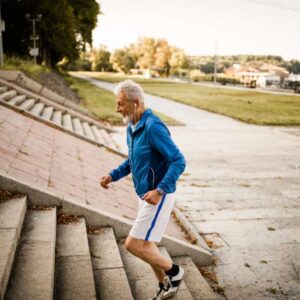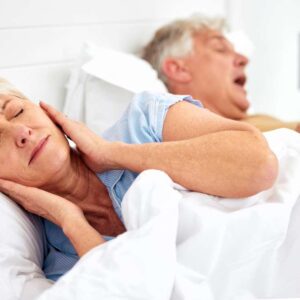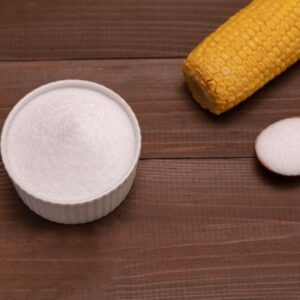
Maintain "TEENAGE" Muscles with a 10-Minute Therapy?
We don’t talk about it much…
But one of the MOST vital parts of healthy aging is maintaining muscle strength.
You see, strong muscles help us stay independent, prevent falls, maintain flexibility, and EVEN boost brainpower.
Regularly moving your body as you age is critical for staying healthy. I typically recommend an active hobby like hiking, swimming, or golf.
But let’s face it, most of us could still use a little EXTRA help building and maintaining those “teenage” muscles… ESPECIALLY as we reach our Golden Years.
And research has just revealed a novel new therapy that could hold the key to accomplishing EXACTLY that. Oh, and best of all, it only takes 10 minutes a session!
Age-related muscle weakness often follows an illness or injury. And it can destroy your quality of life and steal your independence.
After all, your muscles are at the core of everything you do. And when you lose muscle strength, EVERYTHING gets harder—from getting dressed to fixing meals.
As you age, having strong, healthy muscles is vital for many reasons, including…
- Supporting healthy joints and bones.
- Reducing your risk of long-term diseases including, osteoporosis, diabetes, and obesity.
- Maintaining a healthy metabolism and weight.
- Improving insulin sensitivity for healthy blood sugar.
- Overcoming and avoiding future illnesses and injuries.
But I get it. Building and maintaining muscles is often FAR easier said than done. Especially when you’re ALREADY weakened by age and illness.
This is why I’m always looking for hacks to help folks supercharge their fitness routines. And a recent study published in the journal Aging revealed a surprisingly effective 10-minute muscle-building trick that I couldn’t wait to share with you.
It turns out there may be a way to get all the benefits of EXTRA exercise without lifting a finger.
The study focused on a therapy called proprietary pulsed electromagnetic field (PEMF). PEMF sends targeted magnetic signals into muscles creating metabolic activity in the cells that are similar to what we see with exercise.
This therapy is often used after surgeries to help shorten recovery time, and is also used for pain relief.
The researchers wondered if PEMF could be used to increase muscle mass and fight muscle weakness. So they recruited 101 volunteers, ages 38 to 91, to find out.
It turns out the PEMF therapy…
- improved mobility,
- increased muscle strength,
- and reduced pain.
In fact, 85 percent of participants showed improvements. And best of all, the older and frailer a participant was, the BETTER the results.
If you’re interested in trying PEMF for muscle strengthening or pain management, you can look online for chiropractors, physical therapists, or PEMF professionals in your area who administer the therapy.
Or check out the practitioner’s page of the Magnawave website (a pioneer in PEMF technology).
P.S. When you lose muscle, it’s not just the loss of mobility that’s a problem. It could also be a sign of something far MORE sinister looming just over the horizon. CLICK HERE to discover how to spot this red flag.
Source:
“Brief, weekly magnetic muscle therapy improves mobility and lean body mass in older adults: a Southeast Asia community case study.” Aging (Albany NY). 2023 Mar 19; 15:1768-1790 . doi. org/ 10.18632/aging.204597
Written By Dr. Scott Olson, ND
Nearly 25 years ago, failed mainstream medical treatments left Dr. Olson in constant pain – and his health in ruins. And that’s when he did something REVOLUTIONARY. He began his career in medicine – and dedicated his life to uncovering the true, underlying causes of disease.
Through his innovative medical practices in Tennessee and Colorado, Dr. Olson has helped cure countless seniors from across America of arthritis… heart disease… diabetes… and even cancer. All without risky prescription drugs or painful surgeries.
View More Free Articles
Stop Obsessing Over Diet Trends
Can we stop with the endless diet debates already? Every other week there’s a new headline shouting about which diet is best for weight loss, heart health, or diabetes. Paleo, keto, low-carb, high-protein… it’s exhausting. And now, a new meta-analysis is out comparing the Mediterranean diet, the DASH diet, and something called AHEI (that’s “Alternative...
A New Reason to Ditch Processed Junk
If you’ve ever walked the inside aisles of your local grocery store and thought, “This is all just junk,” your instincts were spot on. A new study published in the journal Thorax just added another red flag to the list of dangers linked to ultra-processed food—a 41 percent higher risk of lung cancer. That’s right....
When Being Winded on Stairs Is Serious (And When It Isn’t)
I had an athlete visit me recently because he experienced shortness of breath while climbing stairs. He is in great shape, so he was worried about what it might mean. “Doc,” he said, “I run five miles three times a week. Why am I huffing and puffing after two flights of stairs?” His concern is...
Study EXPOSES Hidden Danger Lurking in Your Car
We think of our homes and cars as safe havens. But according to a startling new study, they may be flooding your lungs with microscopic plastic particles—every single day. Researchers in France recently found that adults inhale an average of 68,000 microplastic particles daily from indoor air alone. To put that in perspective, that’s about...
Mailbag: Is Modern Food Making You Snore?
“What can cause snoring, and is there a way to correct this issue?” —Seeking Silence Hi Seeking, Snoring happens when the soft tissues in your throat relax and vibrate as air passes through during sleep. While several factors can cause snoring—from sleep position to nasal congestion—I want to share one trigger that might surprise you....
Simple Food Swap SLASHES Dementia Risk 28%
Let’s be honest… who would jump at the chance to cut their dementia risk by 28 percent. And no, you don’t need to run marathons, survive on broccoli, or learn to play the zither (whatever that is) to make it happen. All it takes is one easy swap—something that’s probably already in your refrigerator. Researchers...
This SMART Floss Exposes Hidden Health Danger
Scientists have created dental floss that doesn’t just clean between your teeth—it also tracks your stress while you’re flossing. Now, I know what you’re thinking… “Great—now even flossing is going to stress me out by telling me how stressed I am.” But this fascinating new tool from Tufts University could be a game-changer for understanding...
Is This "Safe" Sweetener Damaging Your Brain?
The headlines are alarming… “Popular Sugar Substitute Linked to Brain Cell Damage” and “Erythritol Could Damage Critical Brain Barrier” are just two of the dozens I’ve spotted recently. But before you toss every sugar-free product in your pantry, let’s take a closer look at what this study actually shows—and what it doesn’t. The latest research...
This Summer Threat Could SPIKE Your Blood Sugar
Picture this… It’s another scorching hot summer day. You crank up the air conditioning while watching the weather forecast, which predicts yet another “record-breaking” heat wave. It’s starting to feel like just another miserably uncomfortable summer. But what you might not realize is that—if you have diabetes—those rising temps could do far more damage to...
Move Over Yogurt—5 Foods That Pack MORE Probiotics
Let’s talk about your gut. The microbiome is the collection of trillions of bacteria and other tiny organisms that live in and on your body—especially in your gut—and help keep you healthy. I’ve written often about how vital it is to maintain a healthy microbiome. And you might have dutifully added yogurt to your shopping...









